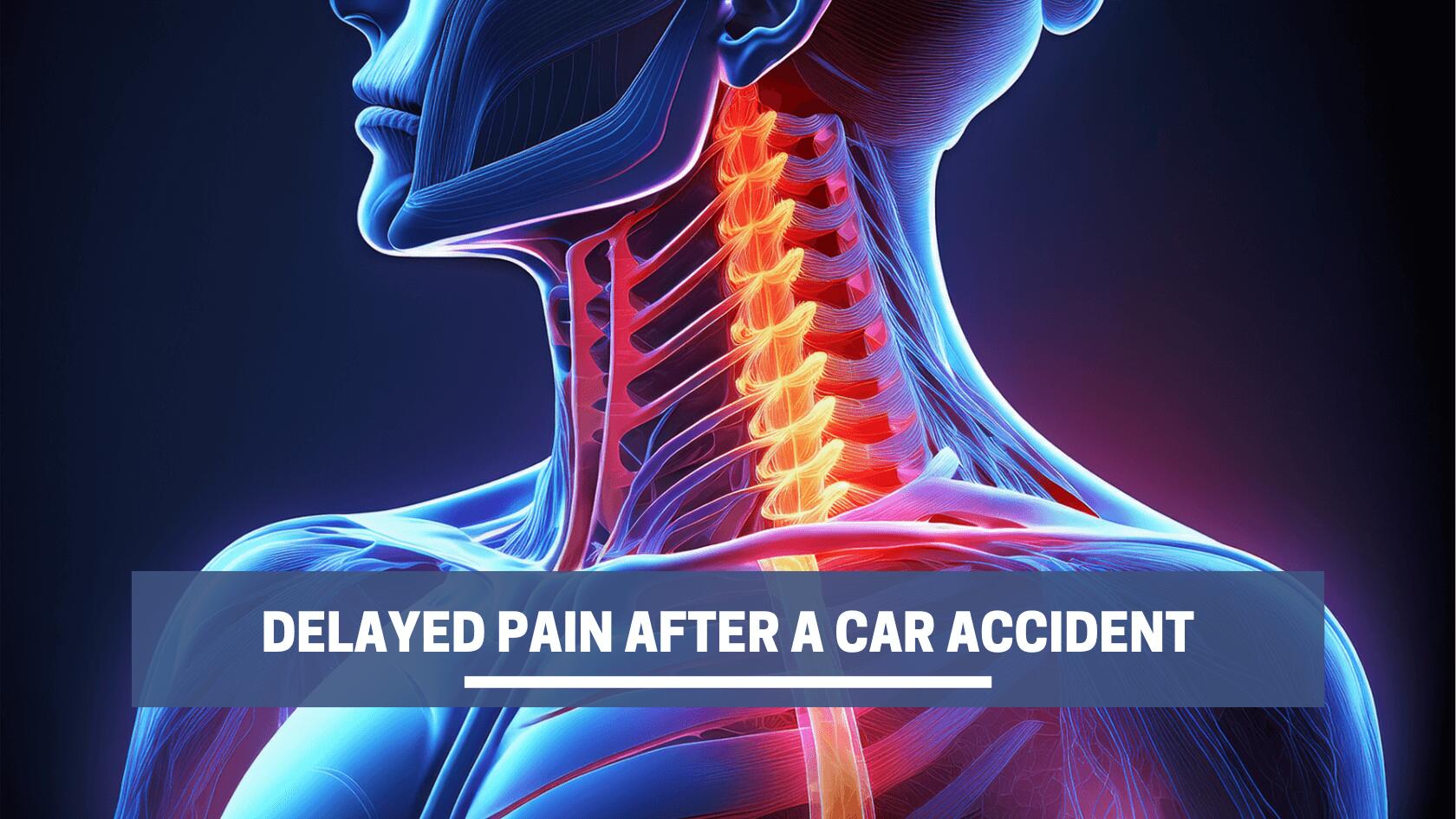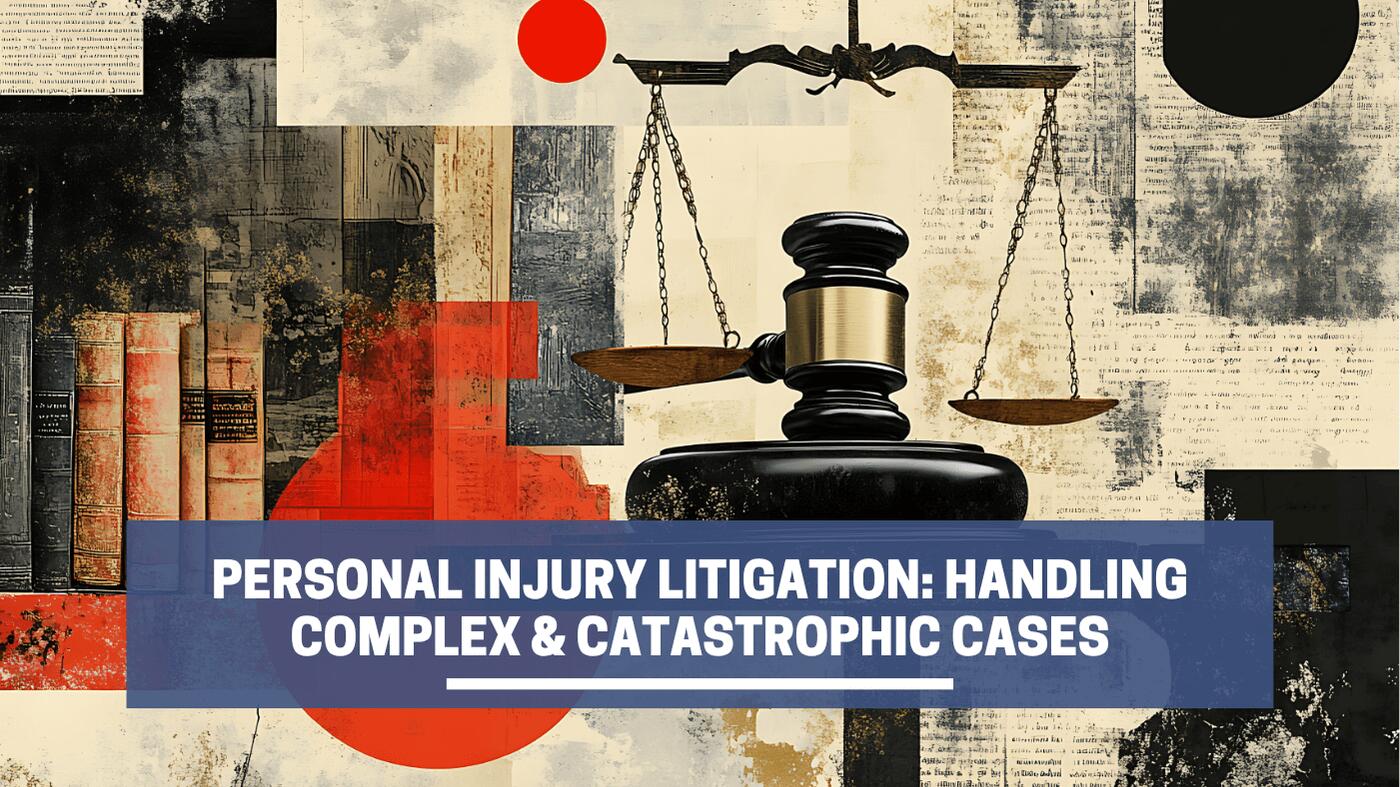You’re driving down Ventura Boulevard in Los Angeles when another car collides with yours. Shaken but thinking you’re fine, you exchange information and head home. The next morning, you wake up sore, with a pounding headache and stiff neck, and realize the crash affected you more than you thought.
It’s easy to assume you’re okay if you can walk away from a car crash without obvious injuries. But in many cases, the most serious damage doesn’t appear right after the accident. Your body may be in shock, adrenaline can mask pain, and inflammation often takes hours—or even days—to set in.
When pain lingers, it can leave you feeling anxious and overwhelmed, especially if you didn’t see a doctor immediately. Understanding how car accident delayed injury symptoms work—and what to do about them—can protect your health and your right to compensation for medical bills, lost wages, and other damages.
Common Injuries With Delayed Symptoms in a Car Accident
Not all injuries show up immediately after a crash. As swelling, nerve irritation, or muscle damage develops, symptoms may not appear until later. That’s why knowing what to look for in the days following a collision is important.
Common delayed injuries include:
| Injury | Time of Onset | Symptoms To Watch For |
| Whiplash | 12 to 48 hours | Whiplash delayed pain includes neck stiffness, headaches, fatigue, or shoulder pain |
| Concussion / Traumatic Brain Injury (TBI) | Immediately to days or weeks later | Memory problems, dizziness, irritability, and light sensitivity are all concussion delayed symptoms. |
| Back Injuries | Several hours to a few days | Back pain delayed symptoms may include radiating pain, numbness, or stiffness in the lower back. |
| Soft Tissue Injuries | 24 to 48 hours | Soft tissue injury delayed symptoms include swelling, soreness, bruising, or loss of range of motion. |
| Internal Bleeding | Within hours to a few days | Internal damage may lead to abdominal pain, swelling, dizziness, or deep bruising. |
| Psychological Trauma | Varies, often up to six months | Anxiety, mood swings, trouble sleeping, or flashbacks can signal mental harm. |
If you were involved in a collision and feel lingering soreness, limited mobility, or unusual fatigue, visit a doctor as soon as possible to diagnose and document the injury.
Why Medical Care Is So Important
Just because you walk away from a crash without pain doesn’t mean you’re injury-free. That’s why getting medical care right away is so important:
Hidden Damage Can Be Life-Threatening
Conditions such as internal bleeding or organ damage may not cause visible symptoms but can become fatal if ignored. A prompt exam lets doctors order imaging, run blood tests, and begin treatment before the condition worsens.
Some Injuries Require Clinical Evaluation
Internal trauma, soft tissue damage, and concussions can take time to develop fully. A physician may use neurological checks, imaging like CT scans or MRIs, or range-of-motion tests to diagnose injuries early and prevent complications such as chronic pain, mobility loss, or permanent damage.
Early Care Builds a Medical Timeline
Prompt treatment creates a medical record that links your symptoms to the crash. This documentation is harder to establish if you wait, especially if new symptoms arise or existing ones worsen.
First Visits Guide the Recovery Process
Initial care helps set a baseline for treatment, which might include physical therapy, pain management, or follow-up with a specialist. It also shows the extent of your injuries and how your recovery progresses.
Waiting too long to treat delayed pain after a car accident can cause serious health problems and make it harder to pursue financial recovery.
How Post-Accident Symptoms Can Affect Your Legal Case
Late-onset pain after a crash can raise doubts about the cause and seriousness of your injuries. Without prompt documentation, insurers may use delays to weaken your claim.
Insurers may try to:
- Dispute when the injury occurred. If your pain surfaced later, they may argue the accident wasn’t the cause. This creates doubt in your claim and makes it harder to connect the injury to the crash.
- Undermine the seriousness of your injury. Waiting to seek treatment can make the harm look less serious. Insurers often use this to argue you don’t need the level of medical care or financial support you’re asking for.
- Limit damages for medical costs. A gap between the crash and your care may lead insurers to argue some of your treatment wasn’t needed. That can reduce what they pay for medical bills or therapy for high-cost injuries, like spinal damage or a TBI.
- Challenge damages for future impact. Proving long-term damages is difficult without a record showing how your symptoms developed. That lack of evidence can lower support for issues like reduced mobility, lasting pain, or future medical care.
Taking the proper steps after a collision can affect your recovery and the outcome of your claim.
What To Do if You’re Feeling Pain Days After a Crash
If you didn’t see a doctor right away and pain has started to develop, you can still act to protect your claim. Take these steps:
- Visit urgent care, the ER, or make a doctor’s appointment as soon as possible.
- Ask for copies of records and test results to document your condition.
- Keep a log of your symptoms, noting the time they appear, their intensity, and how they change.
- Take photographs of any visible swelling, bruising, or other physical changes.
Next, talk to a qualified personal injury attorney. They can help you:
- Understand your rights, even if you didn’t feel injured
- Document your symptoms in a way that connects them to the accident
- Push back against unfair settlement tactics
- Get referred to specialists for further evaluation or treatment
Experienced legal representation can help you pursue fair financial support for your recovery and future needs.
Protect Your Rights After a Crash
Car accidents leave lasting effects that aren’t always visible immediately. Hidden injuries and lingering pain can impact daily life, interfere with work, and create medical costs you didn’t expect.
If new soreness or discomfort appears, schedule a checkup to protect your health. Track your symptoms and consult an attorney for legal guidance. Acting quickly makes it easier to recover fully and build a strong claim for the care and compensation you deserve.
Schedule a free, confidential consultation with The Shirvanaian Law Firm to learn about your rights and the next steps.
FAQ
How long after a car accident can pain appear?
Pain can show up immediately or take hours, days, or even weeks to surface. This delay is common with injuries like whiplash, concussions, and soft tissue damage.
Can you file a claim if your injuries appeared days later?
Delayed symptoms won’t prevent you from filing a personal injury claim. However, you will need medical documentation and an attorney who can connect your injury to the accident to protect your claim.
Why didn’t I feel pain immediately after the crash?
Your body releases adrenaline during a collision, which can mask pain for several hours. Once it wears off, inflammation and nerve pain often become more noticeable.
What types of injuries show delayed symptoms?
Whiplash, concussions, soft tissue injuries, herniated discs, and internal bleeding may take hours or days to appear. Psychological trauma, such as anxiety or PTSD, can take weeks or even months to surface.
Should I still see a doctor if I feel fine after an accident?
Some injuries are hidden or slow to develop; delaying care can worsen them. If you can’t see your doctor immediately after a car wreck, go to urgent care or the ER. Prompt medical records protect your health and your right to a claim if symptoms appear later.











